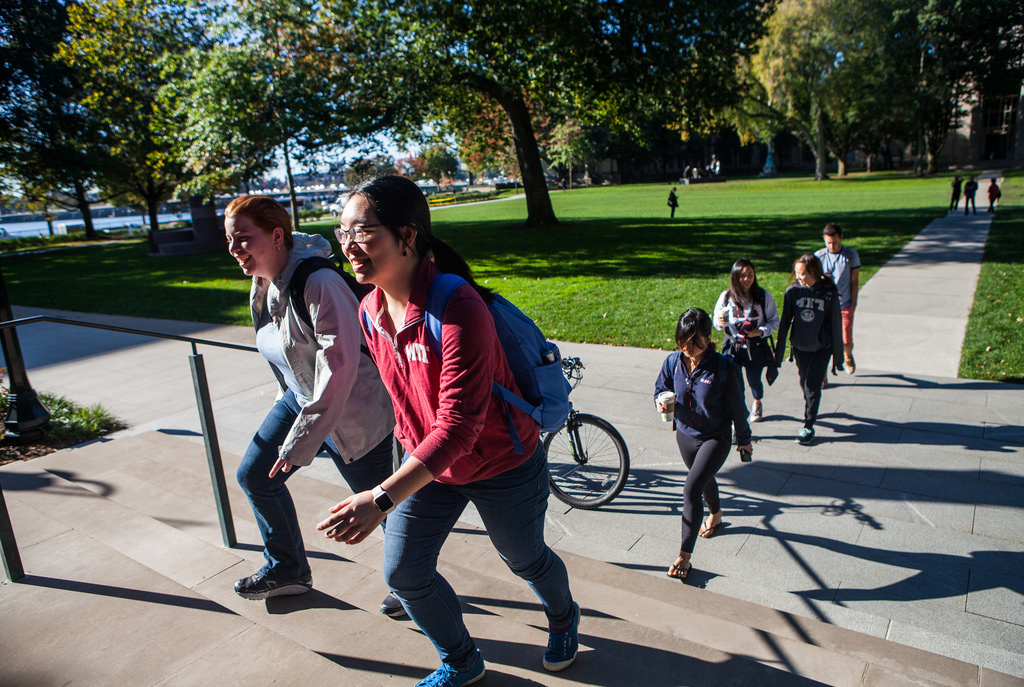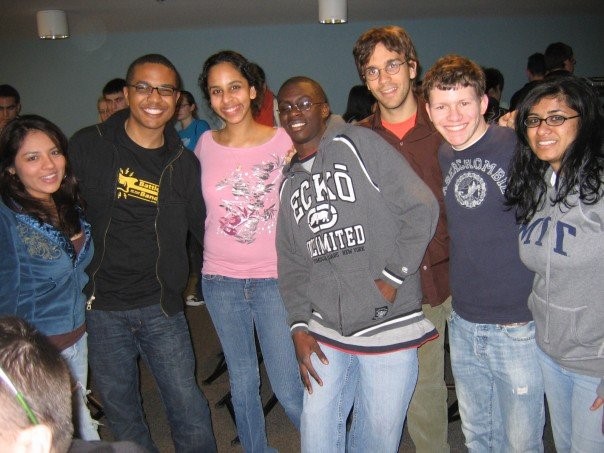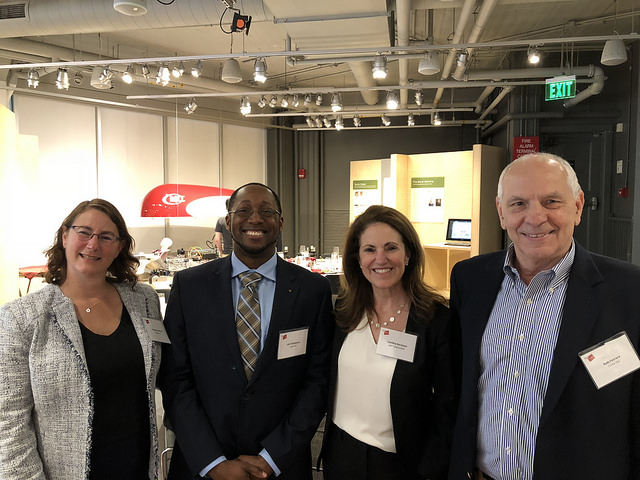Time Travel and Returning Home: Stories from MIT Volunteers
-
-
slice.mit.edu
- 2
Filed Under
Recommended

More than 16,000 volunteers support MIT’s mission to make a better world. Their roles—from mentors to Educational Counselors (ECs)—are as diverse as their reasons for giving back to MIT. Learn how three volunteers got their start, and why supporting the MIT community is important to them.
Jenn Maxwell ’01
When Jenn Maxwell moved to Los Angeles after graduation, she had a few MIT friends in the area, but keeping in touch wasn’t as easy it used to be. Though some of Maxwell’s friends also moved to Los Angeles meeting up proved more challenging than when they had shared a campus and classes. “I started volunteering as a way to continue that camaraderie,” she says. Maxwell connected with the MIT Club of Southern California and quickly built lasting relationships at the events she attended. “It was very homey,” she remembers. Serving as president of the club in 2006, Maxwell soon expanded her volunteering.
“Being president of MIT Club of Southern California in 2006 taught me leadership skills that I still use today.”
To deepen her connections as a volunteer, Maxwell turned to her work at NASA. As a Mars 2020 system testbed product delivery manager at NASA’s Jet Propulsion Laboratory (JPL), Maxwell worked to connect the more than 200 MIT alumni employees working at the lab. “I was able to continue to create my own little MIT network, right at JPL,” she says. Currently an Educational Counselor, Community Catalyst Leadership Program coach, and career advisor with the MIT Alumni Advisors Hub, Maxwell says she loves connecting with current and potential MIT students. “My favorite part is being able to share with them that I understand where they are sitting and what they’re going through,” she says. “I want to help them see what life is like on the other side.”
Bryan Bryson ’07, PhD ’13
Bryan Bryson was reminded of the power of the MIT experience when he saw a stranger on the subway wearing a familiar artifact—the Brass Rat. “We struck up a conversation, and though he graduated before I was born, his connection and mine were almost the same,” he says. “There’s this consistent temporal narrative of community at MIT.” Bryson believes that student and alumni engagement provide an essential base for a consistent community experience at MIT and beyond—that’s why he continues to volunteer.
and though he graduated before I was born, his connection and mine were almost the same,” he says. “There’s this consistent temporal narrative of community at MIT.” Bryson believes that student and alumni engagement provide an essential base for a consistent community experience at MIT and beyond—that’s why he continues to volunteer.
“My greatest joy in volunteering is in telling people that once you graduate from here, you can take on any challenge you want to.”
Currently an assistant professor in MIT’s Department of Biological Engineering, as well as an Educational Counselor, past reunion volunteer, and alumni advisor for his fraternity, Zeta Beta Tau, Bryson sees volunteering as another part of the MIT journey—and a way to time travel. “I get to interact with the people who are going to replace me in what I do in a few years. It’s a way to see what the future is going to look like,” he says.
Akil Middleton ’08, SM ’10
For Akil Middleton, volunteering was a natural next step when he pursued his master’s degree at MIT. As a graduate student living in the chapter house of his fraternity, Zeta Psi, he quickly found himself sharing advice with his undergraduate housemates. “I became the old guy in the house and immediately transitioned into this unofficial mentor role,” he says.

After a year of unofficial duty, Middleton was invited by the fraternity’s alumni board to become an official alumni advisor. Eventually becoming president of Zeta Psi’s alumni board, he says volunteering in his fraternity made it easy for him to expand his role. “It’s a very natural transition to go from being an undergraduate member of a Fraternities, Sororities & Independent Living Groups (FSILG) to an alumni volunteer,” he says. He now serves as chair of the board of directors of the Association of Independent Living Groups (AILG) in addition to his role with Zeta Psi.
“Volunteering is great because it encourages other people to volunteer.”
Middleton says his favorite part of volunteering is seeing how it can impact others to give back in their own way. “It’s really cool to see how that cycle keeps going,” he says. “It’s great interacting with people across decades, classes, and organizations and see them come together and work for a common cause.”
Celebrate the work of MIT’s volunteers and develop your skills at the MIT Alumni Leadership Conference, September 21–22, 2018. Register.








Comments
David Bragdon
Mon, 08/27/2018 2:10pm
Bryan Bryson on "...community experience at MIT and beyond."
Nicole's teaser lead-in ("Time Travel") for this Slice article led me to Bryan Bryson's insight into one of the intense rewards of extending the MIT experience beyond one's own student years. Bryan describes the possibility of interacting across a broad spectrum of the MIT community, with both younger and older members.
Bryan is 100% right that student and alumni engagement can be the doorway to "... this consistent temporal narrative of community at MIT.”
Engagement can go well beyond connection with one's own class. MITAA has gifted me the opportunity to interact with pre-frosh, current students, classmates, and alums going back decades prior to my own class. Sometimes, I've been lucky to join in impromptu story-telling circles where MIT students trade & compare experiences even with World War II era MIT alums. What rare time travel – exciting and hugely enlarging.
- David Bragdon '62
Nicole Morell
Mon, 08/27/2018 4:19pm
(No subject)
Thanks, David! Definitely a great analogy and insight from Bryan.